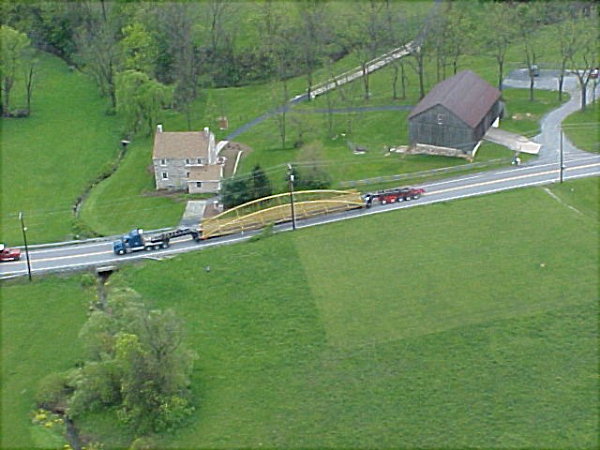Under Section 106 of the National Historic Preservation Act, federal agencies must consider the effect of their projects on historic properties which are defined as resources listed in or eligible for listing in the National Register of Historic Places. It is the role of the Pennsylvania State Historic Preservation Office to participate in consultation with the federal agency to seek ways to avoid or minimize adverse effects of projects on historic properties.
Historic bridges are one of the most common property types affected by federal projects. When a bridge cannot be rehabilitated to meet local traffic needs, the Pennsylvania Department of Transportation (PennDOT), acting on behalf of the Federal Highway Administration (FHWA), is required to seek alternatives to the demolition of the bridge that enable its preservation or rehabilitation for another use. Alternatives to demolition could include adaptive reuse of the bridge for pedestrian or bicycle use, preservation of the bridge in its current location (for use as a tourist attraction or park), or relocation of the bridge to a new location for use by another entity.
If a bridge cannot be preserved, then FHWA requires it be “marketed” prior to demolition. Marketing is an attempt to make the bridge available to a government, public entity, individual, or private group, that is willing to accept ownership. In turn, the recipient must be able to demonstrate the financial capability to rehabilitate and continue the maintenance of the bridge.
While some bridge types have little potential for reuse, such as concrete or masonry spans, historic metal truss bridges are the most common candidates due to their ability to be dismantled and reconstructed. To date, six bridges have been successfully marketed for relocation and use by the public on bike paths, nature trails, and state universities throughout Pennsylvania.
When historic bridges are transferred out of PennDOT ownership, the new owner is required to maintain the bridge in accordance with the Secretary of the Interior’s Standards for Rehabilitation and Guidelines for Rehabilitating Historic Buildings. These guidelines provide for the preservation of the historic and architectural integrity of the bridge. For truss bridges, rehabilitation focuses on the preservation of the trusses and the connections between members.
There are real benefits to the reuse of historic bridges:
- Recycling a historic bridge is sustainable, eliminating the need for a new pre-fab structure.
- Adopting a historic bridge could be cheaper than building a new one. PennDOT will apply the estimated demolition costs for the bridge towards the rehabilitation, moving, and/or installation costs incurred by the recipient.
- Having a bridge as a component of a pedestrian or bicycle route adds character and can serve as an educational tool.
To find out more details on the bridge marketing program and a list of available bridges please go to http://paprojectpath.org/penndot-crm/bridges/bridges-for-sale. If you are interested in adopting a bridge and would like additional information about PennDOT’s bridge marketing program, please contact Kara Russell at krussell@pa.gov.
Comment Policy
PHMC welcomes and encourages topic-related comments on this blog. PHMC reserves the right to remove comments that in PHMC’s discretion do not follow participation guidelines.
Commenters and Comments shall be related to the blog post topic and respectful of others who use this site.
Commenters and Comments shall not: use language that is offensive, inflammatory or provocative (this includes, but is not limited to, using profanity, obscene, or vulgar comments); disparage other commenters or people; condone illegal activity; identify the location of known or suspected archeological sites; post personal information in comments such as addresses, phone numbers, e-mail addresses or other contact details, which may relate to you or other individuals; impersonate or falsely claim to represent a person or an organization; make any commercial endorsement or promotion of any product, service or publication.
If you would like to comment on other topics not related to this blog post but related to PHMC, please fill out the PHMC Contact Us Form.
